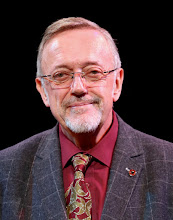There is scarcely a Disney character that has not become universally known and instantly recognisable –
Snow White,
Dumbo,
Bambi,
Cinderella and
Alice
– but, very occasionally, characters transcends even that reputation:
the Mouse and his companions were, of course, the first and in 1940,
Pinocchio's pint-sized conscience, Jiminy Cricket made a second film appearance (
Fun and Fancy Free) and was soon a TV regular.
But even Master Cricket can not compete with the success of Tinker Bell, the tiny sprite from Disney's 1953 feature,
Peter Pan...
Apart from helping transport the Darling children to Never Land,
she went on to provide the opening magic for Uncle Walt's
Disneyland TV show
and, in the theme park of the same name, regularly took flight from the
Matterhorn Mountain to Sleeping Beauty's castle to herald the nightly 'Fantasy
in the Sky' firework displays.
And even then her career
was just beginning since the mischievous, temperamental Tink went on to
promote peanut butter (the demands of fame), appear in her own comics,
reprise her film role in
Return to Never Land (not to mention cameos in
The Black Cauldron and
Who Framed Roger Rabbit) before delighting new audiences of youngsters in the
Peter and the Starcatcher books and the world of Pixie Hollow before, finally, getting her own feature film.
This
amazing career is catalogued in a glorious new book,
Tinker Bell: An
Evolution, painstakingly researched and delightfully chronicled by
Mindy
Johnson (who is credited on the dust-wrapper but, bizarrely,
not on
the title page).
Although the large format serves well the profusion of
concept and animation art (much of it previously unpublished), this is
much more than a coffee-table book for fairy-fanciers since the author
traces the Disney incarnation of Tinker Bell back to her and Peter Pan's
literary and theatrical origins in the imagination of Scottish
playwright and novelist, J M Barrie.
Illustrated with intriguing historical photographs, Johnson recounts how the inspiration for Peter Pan, Neverland, Captain Hook and Tinker Bell grew out of Barrie's friendship with a family of children that included a real-life Peter; and how the idea of 'the boy who wouldn't grow up' first found its way into print in 1903 with an account of Peter's adventures among the fairy folk of London's Kensington Gardens and, the following year (and for decades after), on stage.
The
relevance of this 'back story' to the later Disney feature film becomes
clear when we learn that Disney had first begun exploring Peter Pan's
film potential as early as 1935 and that during the almost twenty years
it took Pan and Tink to become Disney characters, the scenario passed
through many iterations that includied a sequence relating how the fairies
raised Peter from a baby.
Other abandoned story-lines included having a
company of fairies acting as servants for the Lost Boys; Peter taking
Wendy to the Fairy Circle to watch Tinker Bell and her companions
dancing and playing; and a sequence in which Tink transforms Wendy, John
and Michael Darling into merfolk and takes them on an underwater tour
of the Never Land coast.
So well do we now recognise
Miss Bell's appearance that it will come as a surprise to many just what a variety of
'looks' she went through on her journey to Disney stardom: in the
theatre, she had only ever been represented by a travelling spotlight;
film however, with its capability for showing small detail in close-up, needed
something more corporeal and the Tink variations are fascinating and
include various brunette and red-head versions as well as her final
appearance as a blonde.
The book is full of storyboard sketches, conceptual art, layout and animation drawings as well as film stills from the Pan and Tink movies as well as other related projects such as the
Pinocchio with its Blue Fairy and
Fantasia
with its 'Nutcracker' fairy kingdom.
The work of many Disney is represented, including
David R Hall, Mary Blair and, of course, Marc Davis, the
man responsible for her eventual on-screen performance.
Mindy Johnson
also pays tribute to the work of Katherine Beaumont (also the voice and model for Wendy) and Mary Kerry whose
live-action performances (often using giant props) were filmed as live-action footage to help create Tink's
characterful movements.
Katherine Beaumont and Mary Kerry (photo: Brian Sibley)
Because the story of Tinker
Bell's evolution takes place across the span of a century, this book is a
fascinating journey through literary, theatrical, cinematic and
pop-cultural history as well as providing a unique insight into the
workings of the Disney studio across over seventy years.
Tinker Bell; An Evolution by Mindy Johnson, with a Foreword by John Lasseter, pp.192, is published by Disney Editions, $40.00
Available ($29.67) from
Amazon.com and (£21.22) from
Amazon.uk





















































.jpg)




















